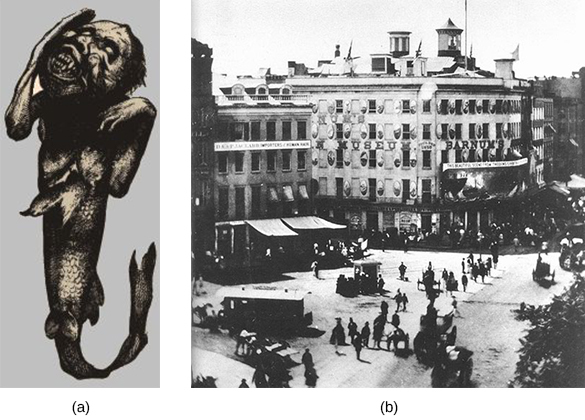| << Chapter < Page | Chapter >> Page > |
Although most working-class men sought to emulate the middle class by keeping their wives and children out of the work force, their economic situation often necessitated that others besides the male head of the family contribute to its support. Thus, working-class children might attend school for a few years or learn to read and write at Sunday school, but education was sacrificed when income was needed, and many working-class children went to work in factories. While the wives of wage laborers usually did not work for wages outside the home, many took in laundry or did piecework at home to supplement the family’s income.
Although the urban working class could not afford the consumer goods that the middle class could, its members did exercise a great deal of influence over popular culture. Theirs was a festive public culture of release and escape from the drudgery of factory work, catered to by the likes of Phineas Taylor Barnum, the celebrated circus promoter and showman. Taverns also served an important function as places to forget the long hours and uncertain wages of the factories. Alcohol consumption was high among the working class, although many workers did take part in the temperance movement. It is little wonder that middle-class manufacturers attempted to abolish alcohol.
The Connecticut native P. T. Barnum catered to the demand for escape and cheap amusements among the working class. His American Museum in New York City opened in 1841 and achieved great success. Millions flocked to see Barnum’s exhibits, which included a number of fantastic human and animal oddities, almost all of which were hoaxes. One exhibit in the 1840s featured the “Feejee Mermaid,” which Barnum presented as proof of the existence of the mythical mermaids of the deep ( [link] ). In truth, the mermaid was a half-monkey, half-fish stitched together.

Visit The Lost Museum to take a virtual tour of P. T. Barnum’s incredible museum.
Wage workers in the North were largely hostile to the abolition of slavery, fearing it would unleash more competition for jobs from free blacks. Many were also hostile to immigration. The pace of immigration to the United States accelerated in the 1840s and 1850s as Europeans were drawn to the promise of employment and land in the United States. Many new members of the working class came from the ranks of these immigrants, who brought new foods, customs, and religions. The Roman Catholic population of the United States, fairly small before this period, began to swell with the arrival of the Irish and the Germans.
The creation of distinctive classes in the North drove striking new cultural developments. Even among the wealthy elites, northern business families, who had mainly inherited their money, distanced themselves from the newly wealthy manufacturing leaders. Regardless of how they had earned their money, however, the elite lived and socialized apart from members of the growing middle class. The middle class valued work, consumption, and education and dedicated their energies to maintaining or advancing their social status. Wage workers formed their own society in industrial cities and mill villages, though lack of money and long working hours effectively prevented the working class from consuming the fruits of their labor, educating their children, or advancing up the economic ladder.

Notification Switch
Would you like to follow the 'U.s. history' conversation and receive update notifications?